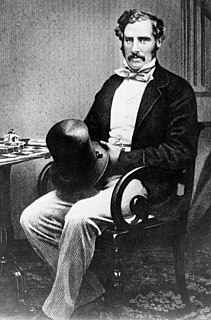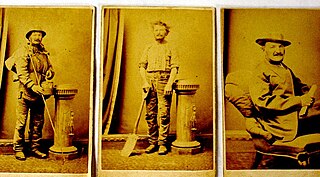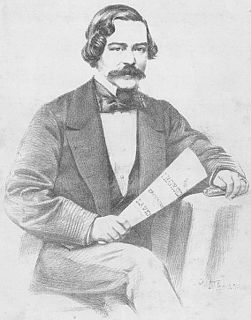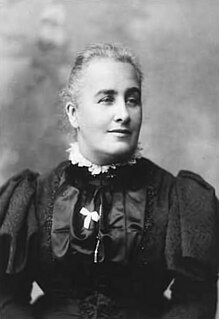 W
WMaybanke Susannah Anderson, also known as Maybanke Wolstenholme was a Sydney reformer involved in women's suffrage and federation.
 W
WThomas Archer, CMG was a pioneer pastoralist and Agent General for Queensland (Australia).
 W
WSir Edmund "Toby" Barton, was an Australian politician and judge who served as the first Prime Minister of Australia, in office from 1901 to 1903. He resigned to become a founding member of the High Court of Australia, where he served until his death.
 W
WJane (Jean) Beadle was an Australian feminist, social worker and Labor party member.
 W
WVice-Admiral William Bligh was an officer of the Royal Navy and a colonial administrator. The Mutiny on the Bounty occurred during his command of HMS Bounty in 1789; after being set adrift in Bounty's launch by the mutineers, Bligh and his loyal men all reached Timor alive, after a journey of 3,618 nautical miles.
 W
WEuphemia Bridges Bowes (1816–1900) was a suffragette and social activist, who campaigned for the temperance movement and helped to raise the age of consent and fight against child prostitution.
 W
WJohn Job Crew Bradfield was an Australian engineer best known as the chief proponent of the Sydney Harbour Bridge, of which he oversaw both the design and construction. He worked for the New South Wales Department of Public Works from 1891 to 1933, although he was a Queenslander by birth. He was the first recipient of an engineering doctorate from the University of Sydney. Other notable projects with which he was associated include the Cataract Dam, the Burrinjuck Dam, and Brisbane's Story Bridge. The Harbour Bridge formed only one component of the City Circle, Bradfield's grand scheme for the railways of central Sydney, a modified version of which was completed after his death. He was also the designer of an unbuilt irrigation project known as the Bradfield Scheme, which proposed that remote areas of western Queensland and north-eastern South Australia could be made fertile by the diversion of rivers from North Queensland.
 W
WCharles Clifton Brittlebank was an Australian plant pathologist, mycologist, scientific illustrator, university lecturer and farmer. In all of his endeavours he became outstanding in his field, gaining international acclaim for his discoveries and publications. In February 1992 he was officially commemorated by the naming of the road Brittlebank Circuit, in the suburb of Banks, in Canberra, Australian Capital Territory.
 W
WColonel Sir Thomas Robert Gore Browne, was a British colonial administrator, who was Governor of St Helena, Governor of New Zealand, Governor of Tasmania and Governor of Bermuda.
 W
WCaroline Chisholm was a 19th-century English humanitarian known mostly for her support of immigrant female and family welfare in Australia. She is commemorated on 16 May in the calendar of saints of the Church of England. There have been proposals for the Catholic Church also to recognise her as a saint; she had converted to Catholicism around the time of her marriage and reared her children as Catholic.
 W
WJanet Marion Clarke was an Australian socialite and philanthropist. She was known to the general public as Lady Clarke, a title which she assumed after her husband's elevation to the baronetage in 1882.
 W
WSarah Cobcroft was a midwife and farmer who emigrated from England to Australia. She arrived in Sydney, Colony of New South Wales on 28 June 1790 aboard Neptune, as part of the Second Fleet.
 W
WMary Colton , remembered as "Lady Colton", was an Australian philanthropist and suffragist.
 W
WHenry Joseph Curran (1843-1882) was an Australian journalist and leading figure in the Catholic communities in Goulburn and Boorowa in the 1860s and 1870s. Curran worked for newspapers in Goulburn, established and edited the Burrowa Advocate and also worked in Sydney on the Freeman's Journal.
 W
WHenrietta Augusta Dugdale, née Worrell was a pioneer Australian who initiated the first female suffrage society in Australia. Her campaigning resulted in breakthroughs for women's rights in Australia.
 W
WEdwin Harold Flack was an Australian athlete and tennis player. Also known as "Teddy", he was Australia's first Olympian, being its only representative in 1896, and the first Olympic champion in the 800 metres and the 1500 metres running events.
 W
WBessie Flower or Bessie Cameron was a Minang Noongar woman from Albany, Western Australia. Flower was educated at Annesfield, and developed a strong connection to headmistress Anne Camfield. Throughout her life she fought for Aboriginal rights and to keep families together. In 1867 Flower relocated to the Ramahyuck Mission, in Gippsland, Victoria, where she worked as a teacher.
 W
WEliza Forlong (1784–1859) was an Australian pioneer who played a large part in introducing Merino sheep to south-east Australia.
 W
WThomas Gilbert (1786–1873), a pioneer in South Australia, was its first Colonial Storekeeper and its first Postmaster. He was also a fourth generation mathematical instrument maker and optician in England, his family being highly regarded in this field at the time.
 W
WCora Gooseberry was an Aboriginal Australian Murro-ore-dial woman and cultural knowledge keeper. In popular culture, she is often depicted smoking a pipe and wearing a scarf on her head. She received two breastplates, one of which was inscribed "Cora Gooseberry/ Freeman/ Bungaree / Queen of Sydney and Botany". It is held by the Mitchell Library.
 W
WEliza Lucy Grey, Lady Grey, was the daughter of British Royal Navy officer Captain Sir Richard Spencer and Ann, Lady Spencer. She was the wife of Sir George Grey.
 W
WSir George Grey, KCB was a British soldier, explorer, colonial administrator and writer. He served in a succession of governing positions: Governor of South Australia, twice Governor of New Zealand, Governor of Cape Colony, and the 11th Premier of New Zealand.
 W
WThomas Hiscock (1812–1855) was an English blacksmith and prospector who settled in Australia in the 1840s. He is best-remembered today for helping to spark the Victorian Gold Rush with his discovery of gold outside the town of Buninyong, near Ballarat.
 W
WVice Admiral John Hunter RN was an officer of the Royal Navy, who succeeded Arthur Phillip as the second governor of New South Wales, Australia and served from 1795 to 1800.
 W
WJoseph Jenkins, was an educated tenant farmer from Tregaron, Ceredigion, mid-Wales who, when aged over 50, suddenly deserted his home and large family to seek his fortune in Australia. The Australian Dictionary of Biography says that "Jenkins's noteworthiness stemmed from the rich documentation of his experiences and thoughts that has survived". He was a consistent diarist for 58 years of his life and a consistent if not outstanding poet, under the bardic name Amnon II. He achieved fame posthumously from publication of some excerpts of his Australian writings. The compiler, his grandson Dr William Evans, a Harley Street cardiologist, coined the title Diary of a Welsh Swagman by which name he is familiar to generations of Victorian school students for whom the book became a prescribed history text in 1978.
 W
WJørgen Jørgensen was a Danish adventurer during the Age of Revolution. During the Action of 2 March 1808 his ship was captured by the British. In 1809 he sailed to Iceland, declared the country independent from Denmark and pronounced himself its ruler. He intended to found a new republic following the United States and the French First Republic. He was also a prolific writer of letters, papers, pamphlets and newspaper articles covering a wide variety of subjects, and for a period was an associate of the famous botanists Joseph Banks and William Jackson Hooker. He left over a hundred written autographs and drawings, most of which are collected in the British Library. Marcus Clarke referred to Jørgensen as "a singularly accomplished fortune wooer—one of the most interesting human comets recorded in history".
 W
WAnna Josepha King (1765–1844) was the wife of Philip Gidley King, the Governor of New South Wales from 1800 to 1806. She was the first person to act as Spouse of the Governor of New South Wales, a territory that was then part of the British Empire and now forms a state of Australia.
 W
WCaptain Philip Gidley King was the third Governor of New South Wales, and did much to organise the young colony in the face of great obstacles.
 W
WSerena Lake was an English Australian suffragist and evangelical preacher in South Australia.
 W
WLewis Henry Lavenu (1818–1859) was an English composer, conductor, musician and impresario.
 W
WMary Lee was an Irish-Australian suffragist and social reformer in South Australia.
 W
WElizabeth Macquarie was the second wife of Lachlan Macquarie, who served as Governor of New South Wales from 1810 to 1821. She played a significant role in the establishment of the colony and is recognised in the naming of many Australian landmarks including Mrs Macquarie's Chair and Elizabeth Street, Hobart. Governor Macquarie named the town of Campbelltown, NSW after his wife's maiden name and a statue of her now stands in Mawson Park, Campbelltown.
 W
WJohn Joseph "Dookie" McKenzie was an Australian rules footballer who played with Essendon and Melbourne in the Victorian Football League (VFL).
 W
WCharles Amos Messenger(1853 - 21 April 1905), a professional sculler, was born in London where his family was well known in aquatic circles. He married Annie Frances Atkinson on 30 November 1875 in Gore St Fitzroy, Victoria, and died in Sydney, Australia.
 W
WAgnes Anderson Milne was a founding member of the South Australian branch of the Women’s Christian Temperance Union, a member of the first executive of the Working Women’s Trades Union, and South Australia’s second female factory inspector.
 W
WElizabeth Webb Nicholls was a key suffragist in the campaign for votes for women in South Australia during the 1890s. She took on several high-profile roles in the capital of South Australia, Adelaide and was President of the Woman's Christian Temperance Union (WCTU) of South Australia, one of the most prominent organisations in the successful campaigns which made South Australia the first of the Australian colonies to grant women the right to vote in 1894.
 W
WMichael Rush was an Irish Australian sculler noted for his one-on-one competitions against champion opponents, which drew vast crowds of spectators. He attempted to win the World Sculling Championship.
 W
WThe murder of Johanne Elizabeth "Bertha" Schippan is an unsolved Australian murder. The victim, the youngest child in a large Wendish family, resided in the South Australian town of Towitta, located approximately 6 km (3.7 mi) west of Sedan. She was murdered on the night of 1 January 1902, at the age of 13. Her 24-year-old sister, Maria “Mary” Auguste, was prosecuted for the crime, but was eventually acquitted. Despite various theories, the case remains unsolved and continues to attract media attention.
 W
WChristina Smith (1809-1893), generally referred to as Mrs James Smith, was a teacher and Christian missionary who documented the lives, customs, legends, and language of the Buandig Indigenous Australians who live in south-eastern South Australia and western Victoria.
 W
WAnn Warden Spencer, Lady Spencer was the daughter of Captain Matthew Liddon and Ann Warden. She was the wife of British Royal Navy Captain Sir Richard Spencer.
 W
WElizabeth Underwood in Norfolk Island NSW, was a pioneering Australian land owner who founded the village of Ashfield, New South Wales.
 W
WLady Mary Elizabeth Windeyer was an Australian women's rights campaigner, particularly in relation to women's suffrage in New South Wales, a philanthropist and charity organizer.